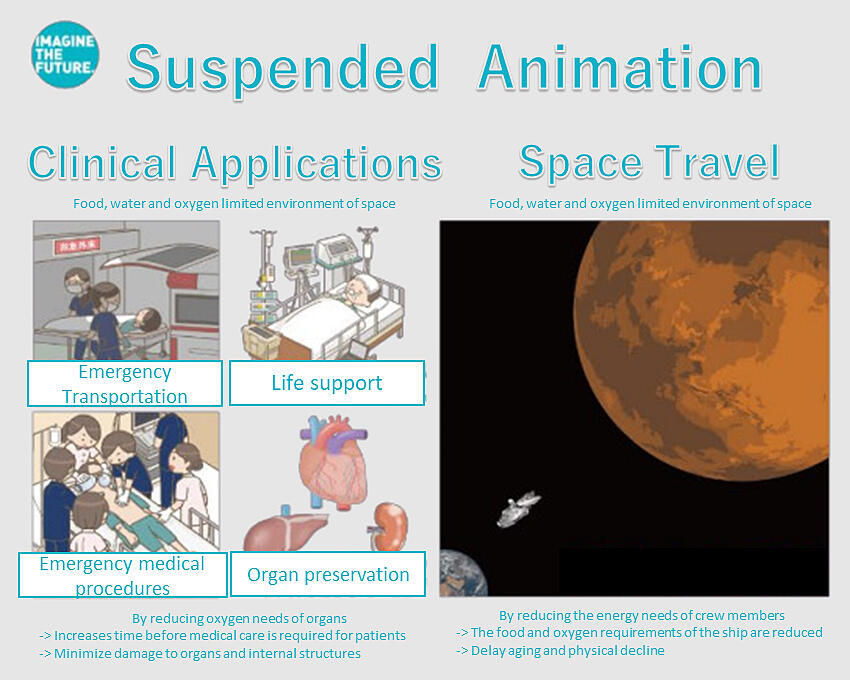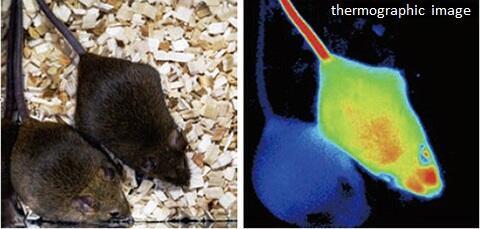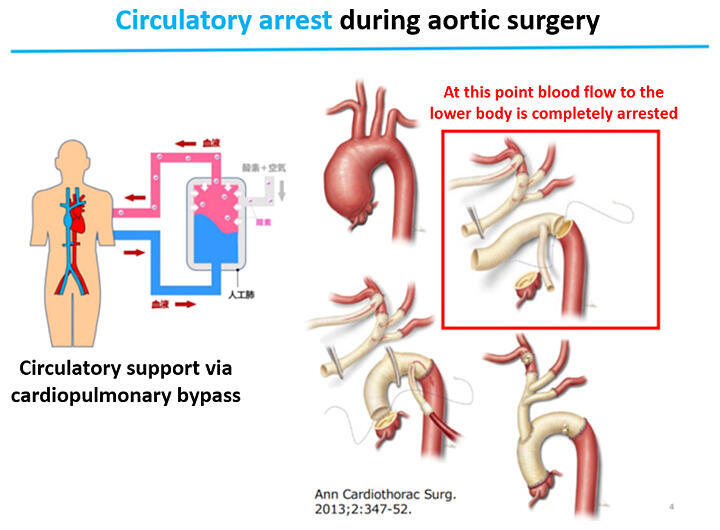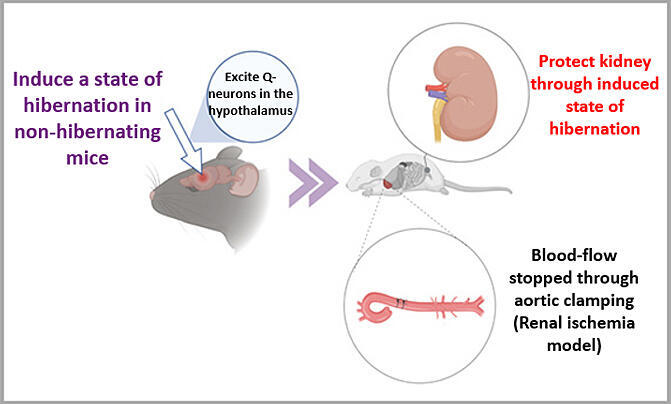Putting a patient into a temporary state of hibernation and carrying out safe operations on the heart... In science fiction, artificial hibernation is known as a "cold sleep" or "suspended animation." Research is progressing to minimize damage to patient organs and tissues by creating this state, lowering the metabolism, oxygen, and energy demands even outside difficult procedures. Hopefully, this will be used for manned space exploration and in the medical field for life extension and organ preservation.
On November 14 last year, a research group from RIKEN and Kyoto University announced that they had induced a state of artificial hibernation by stimulating specific neurons in the mouse brain and confirmed the possibility of reducing stress on the kidneys during cardiovascular surgery. They used the past success of a research group from RIKEN and the University of Tsukuba, which created an "artificial hibernation experimental mouse" in 2020, to move toward medical application.

(provided by RIKEN and the University of Tsukuba and translated by Science Japan)
For a long time, a story from the world of science fiction or dreams
Among vertebrates, mammals maintain a temperature of around 37 degrees by controlling their metabolism. In other words, they have a mechanism that maintains homeostasis. However, some species can lower their metabolism and body temperature when the winter cold comes, or they enter a state of hunger. In these cases, their controlled low metabolism is called torpor ‐ dormancy for 24 hours or less is defined as daily torpor, while seasonal torpor is termed hibernation.
Research on hibernation is old, going back to around the 16th century, and has advanced with the ability to carry out electrocardiograms and measure brainwaves. To survive periods of cold where there is a lack of food, hibernating mammals maintain an "energy‐saving state" to live in environments with poor nutrition. However, the mechanism behind this was not well understood. As a result, research on applying the advantages of hibernation to human medicine went untouched for a long time.
The cold sleep seen in works of science fiction involves cryogenically preserving the body to maintain life, preventing aging over a long period ‐ time only passes when the person is awake. This appears in many movies, including 2001: A Space Odyssey, on the assumption that people won't age during interplanetary travel on a spaceship. But in reality, when the body is frozen, its fluid freezes and cells are damaged, so making use of this in actual society was, for a long time, nothing more than a dream.
Humans do not hibernate and face death when the body temperature drops below a few degrees from the normal range. Because of this, it was impossible to research artificial hibernation on humans, as this required researchers to induce a drop in body temperature. Most well‐used experimental animals do not hibernate, so research was slowed. An easy‐to‐use animal model of hibernation was required.

(provided by RIKEN and the University of Tsukuba and translated by Science Japan)
The birth of an experimental mouse to drive research forward
The creation of an experimental mouse with artificial hibernation provided an opportunity to advance applied research greatly. In June 2020, a research group consisting of Professor Takeshi Sakurai of the Institute of Medicine, University of Tsukuba, Team Leader Genshiro A. Sunagawa (then a Special Postdoctoral Researcher) of the RIKEN Center for Biosystems Dynamics Research and their colleagues released a paper in the British science journal Nature, announcing that they had succeeded in generating a state similar to hibernation by exciting specific neurons in the brains of mice, which do not normally hibernate. The neurons were called quiescence‐inducing neurons or Q neurons.
According to the research group, Q neurons are located in the hypothalamus, the part of the brain that governs body temperature and sleep/wake cycles. When the Q neurons are excited with a single shot of a certain drug, the mouse body temperature (normally around 37 degrees) drops significantly. The oxygen consumption, indicating metabolic activity, is also substantially reduced. The hypothermic (a low body temperature) and hypometabolic (a low metabolic state) state last for two days on average, and it takes a week for the mice to return to normal state. The group called this hibernation‐like state "QIH" which stands for Q neurons‐induced hypometabolism.
This research showed that artificial hibernation in animals that do not hibernate is possible. Researchers had now obtained an experimental mouse that could artificially hibernate.
When these research outcomes were announced, Sakurai and his group noted that "QIH, a hypometabolic state similar to that of hibernation created by inducing hibernation in animals that do not hibernate, is a vital key to our understanding of the mechanism that induces hibernation, which has been unclear in the past. We now think that artificial hibernation in humans is closer to reality."

(provided by Professor Sakurai, University of Tsukuba/RIKEN)
Preventing damage without lowering body temperature — research progresses over the passage of 2 years
This time, a research group consisting of Team Leader Sunagawa and Research Leader Hidetoshi Masumoto of the RIKEN Center for Biosystems Dynamics Research and doctoral students from the Graduate School of Medicine, Kyoto University, made great progress in artificial hibernation research for safe cardiovascular procedures.

(provided by RIKEN)
According to the Ministry of Health, Labour and Welfare of Japan, the number of deaths due to heart disease in Japan is second only to those from cancer, with 168 people dying per 100,000 in 2019. According to the Japanese Association for Thoracic Surgery, around 70,000 cardiovascular procedures occurred in 2017, but the perioperative death rate for acute aortic dissection, for example, was around 10%. Due to the need for circulatory arrest (stopping blood flow) during procedures, kidney damage (perioperative acute kidney injury) occurs in 5%‐50% of cases.
According to Masumoto and his colleagues, during certain types of aorta surgery, the internal organs are protected by a hypothermic state, with doctors using an cardiopulmonary bypass to cool the blood and return it to the body, to reduce kidney damage. Internal organs in which blood stops flowing become hypoxic and suffer increased strain, so lowering the body temperature and metabolism reduces oxygen consumption. However, hypothermia is a double‐edged sword. It can protect the organs from ischemia, but it can increase the occurrence of infection and bleeding.

(provided by RIKEN and Kyoto University)
The research group wondered if they could solve these problems with artificial hibernation techniques. So they used the research outcomes from 2020 to create the QIH mouse, whose Q neurons can be artificially manipulated. The group cut off the blood flow in the aorta and induced an ischemic state on the assumption of performing actual vascular surgery. When they did so, they confirmed that kidney damage can be prevented to a certain degree in the QIH state mouse without low body temperature.
Making a short "gentle procedure" possible
The outcomes announced by the research group from RIKEN and Kyoto University suggest that if researchers can suppress the metabolism by creating a state of artificial hibernation without lowering the body temperature, this could lead to the protection of the internal organs. Sunagawa and Masumoto of RIKEN emphasized that "In the future if we can develop a technique to induce QIH in humans, there is a possibility that we can protect the kidneys without hypothermic circulatory arrest during cardiovascular surgery with circulatory arrest."

(provided by RIKEN and Kyoto University)
In the press release, Masumoto stated the following. "People with arteriosclerosis are increasing around the world as well as in Japan, and so procedures on arteries are also increasing in number. There are 20,000 aorta surgeries in Japan annually, but that number will surely rise. Average life expectancy is increasing, and many people have damage to internal organs before surgery. As the number of procedures on these older people increases, it is becoming all the more necessary to have a strategy to curtail damage during surgery." "Because the current hypothermia treatment during cardiac surgery increases the total time of surgery, if we can appreciate hypometabolism without low body temperature by the artificial hibernation, much gentle surgery on patients will become possible."
The application of artificial hibernation in medicine isn't limited to cardiovascular surgery. For example, severe pneumonia prevents oxygen uptake in the lung, resulting in a shortage of oxygen in peripheral tissues. Usually, the patient will be treated by supplying oxygen at a hospital. In such cases, if it were possible to put the person in a state of hibernation, it would lower oxygen consumption in the organs and reduce the risk of organ damage. We may even avoid further treatment for pneumonia. In the same way, artificial hibernation of organs can contribute to transplant surgeries.
Professor Sakurai of the University of Tsukuba and his colleagues have offered the view that in the future, this could lead to technology that can contribute to the exploration of space, where oxygen, food, and drink are limited. Humanity's ability to obtain artificial hibernation technology might not be so far away.
(UCHIJO Yoshitaka: Science Journalist)
Original article was provided by the Science Portal and has been translated by Science Japan.




